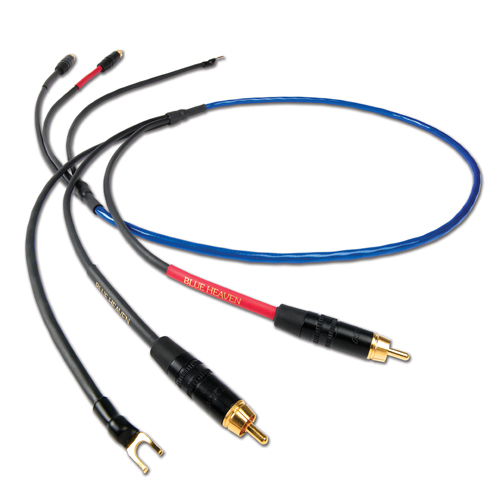Taking It to the Next Level: The Do's and Don'ts of Tonearm-Cable Upgrades
The good news is that this means that upgrading your tonearm lead can produce revelatory results, almost literally lifting a boot from the throat of the record player. Just as any issues are magnified by the rest of the system, so too are the benefits, making this a particularly cost-effective area for potential upgrades. As always, simply examine the cost/benefit equation and choose accordingly. In selecting a cable, pay particular attention to the connectors, ideally choosing low-mass types, and avoid any adapters -- such as RCA-to-XLR for phono stages with balanced inputs. The four-pole generator of a stereo phono cartridge is inherently balanced, so switching to a fully balanced lead to feed a balanced phono stage (with fully complementary circuitry, not just balanced inputs) should bring its own benefits in terms of noise floor and dynamic range. But what about hard-wired leads and internal wiring? As a rule of thumb, I’d always be extremely reluctant to go inside a tonearm unless it is the manufacturer doing the work. One way or another, the internal wiring needs to pass through the bearing, or loop away from it, outside the 'arm. Replacing the standard cable can introduce a number of problems. The replacement might have different mechanical properties and particularly if it is stiffer this can lead to increased resistance to free movement or work-hardening and degradation of the wire. Poorly dressed cables that run through a gimbal housing can dramatically increase friction, doing far more harm than good. Given that the internal cables have to become or connect to the external ones, any swapping of hardwired external leads can have similarly disastrous consequences. All of which means that replacing internal cables is a job best left to experts. However, that is not to say that better internal wires won’t make a significant difference, especially if they use the same conductor material and insulation as the rest of the signal cables in your system, extending its coherence right to the most critical point. But before you undertake this step:
|

 aving extolled the virtues of
dedicated tonearm cables, it is perhaps ironic that so many of the cables supplied with
tonearms are of such mediocre quality, equivalent to an entry-level interconnect. Nobody
would use a $25 lead on a $5000 CD player, but plenty of people are doing exactly that on
record players that sometimes cost tens of thousands. To make matters worse, the signal is
the most fragile one in the system and it is also in the most critical position -- right
at the front, where any errors, damage and inadequacy are amplified by the rest of the
chain.
aving extolled the virtues of
dedicated tonearm cables, it is perhaps ironic that so many of the cables supplied with
tonearms are of such mediocre quality, equivalent to an entry-level interconnect. Nobody
would use a $25 lead on a $5000 CD player, but plenty of people are doing exactly that on
record players that sometimes cost tens of thousands. To make matters worse, the signal is
the most fragile one in the system and it is also in the most critical position -- right
at the front, where any errors, damage and inadequacy are amplified by the rest of the
chain.